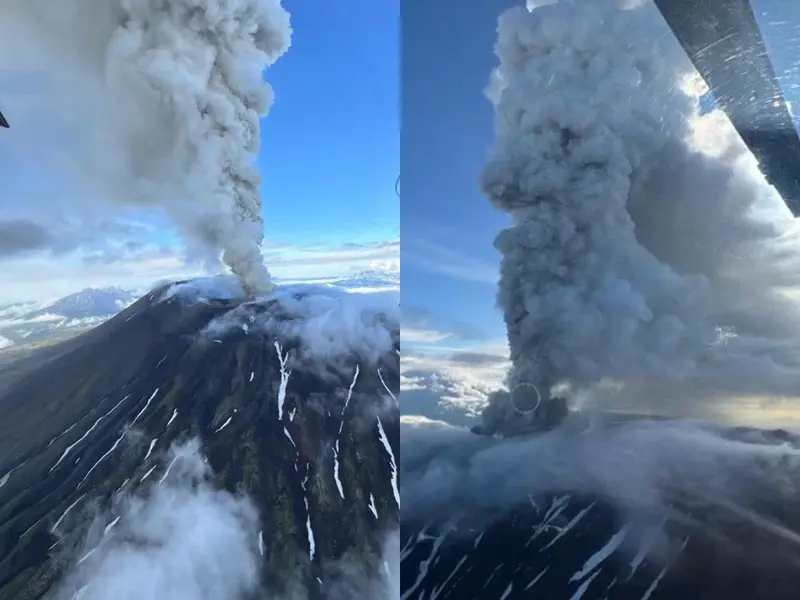After more than four centuries of inactivity, Russia’s Krasheninnikov volcano has erupted, according to a Sunday (August 3) update from national emergency authorities. The eruption occurred just days after the region was shaken by a record-setting earthquake measuring 8.8 on the Richter scale—the most powerful quake the area has experienced in modern history.
The Krasheninnikov volcano, situated in Russia’s remote Kamchatka Peninsula in the Far East, expelled a massive column of ash high into the atmosphere. Images released by Russian state outlets show a dense plume billowing skyward. The Global Volcanism Program at the Smithsonian Institution reports that the volcano’s last known eruption occurred in 1550, marking over 450 years of dormancy.

Ash Column Reaches 6,000 Meters, But No Immediate Threat to Residents
According to a Telegram update from the Kamchatka branch of the Ministry of Emergency Situations, the volcanic ash cloud soared to an altitude of approximately 6,000 meters (19,700 feet). The plume is drifting eastward in the direction of the Pacific Ocean. Authorities noted that the ash is not currently affecting any inhabited areas, and no reports of ashfall have been registered in residential zones along its trajectory.
In response to the eruption, aviation officials have raised the alert level for air traffic to “orange,” indicating a heightened risk of disruption to flights passing through the area.
Second Eruption in Days Amid Unstable Geologic Activity
The Krasheninnikov eruption is the second volcanic event to occur in Kamchatka within a week. Just days earlier, the region’s most active volcano, Klyuchevskoy, also erupted. Known for its frequent activity, Klyuchevskoy has erupted at least 18 times since the year 2000, according to the Global Volcanism Program. The French news agency AFP noted that such activity from Klyuchevskoy is relatively routine.
Triggered by a Megaquake?
These eruptions follow a massive earthquake that struck the Kamchatka region on July 30. The 8.8-magnitude tremor was so powerful that it triggered tsunami alerts not only in Russia but also in neighboring Japan and the United States. The United States Geological Survey (USGS) located the epicenter roughly 133 kilometers southeast of the city of Petropavlovsk-Kamchatsky at a depth of 74 kilometers beneath the Earth’s surface.
Kamchatka’s regional seismic monitoring agency described the earthquake as the strongest to hit the region since 1952. In a public warning, officials advised that powerful aftershocks—potentially reaching up to magnitude 7.5—should be expected in the aftermath of the initial quake. “Given the extraordinary scale of this seismic event, strong aftershocks remain a likely threat,” the agency said.


